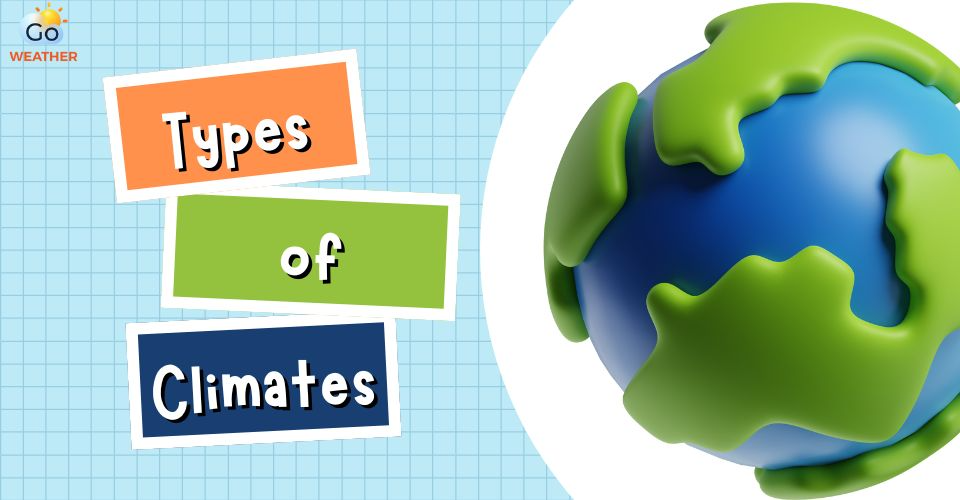10+ Types of Cloud and Their Characteristics: an Ultimate Guide
Sometimes, looking up at the sky and seeing beautiful clouds, have you ever wondered what they are made of, if they have a name (cloud type), or what gives them that shape? Are types of clouds on Earth just simply white clouds, dark clouds, or some things like these? The answer is no. Clouds on our planet come in a variety of sizes, shapes, and heights. Check out this post to find out 10+ types of cloud and their characteristics to learn about some of the most fascinating facts about clouds, cloud types, and more.
.jpg)
What are the names of cloud types?
Understanding about Clouds
First off, let’s spend some minutes learning some basics about clouds, such as what they are made of and how they form.
What are clouds made of?
Clouds are mainly made of tiny water drops or ice crystals.
Aside from the wind (speed and direction), temperature, humidity, and so on, the cloud is a critical factor that meteorologists always use to measure and forecast weather.
.jpg)
Clouds are mainly made of tiny water drops or ice crystals
How clouds form
The majority of clouds form when warm air rises, going higher in the sky, and cools down. Water vapor is present in all air, but warm air can retain more water vapor than cold air.
So, as warm air cools down, water vapor then condenses into tiny water droplets or ice crystals. The cooler air also causes the droplets of water to begin to stick to things such as little bits of dust, ice, or sea salt.
More droplets form as the air cools, eventually forming a cloud.
.jpg)
The formation of clouds
10+ Different Types of Cloud and Their Characteristics
Clouds come in a wide variety of sizes and shapes, each with its own set of characteristics. They are categorized based on how high they are above the surface and how they seem (texture) from the ground.
Based on the base of the cloud above the Earth’s ground, most clouds are grouped as high, middle, or low-level clouds, which are then subdivided into more types.
.jpg)
There are many cloud types
Different forms of clouds also suggest various weather conditions. That means it’s totally possible to predict weather with clouds!
Now, let’s find out the details of each type!
High clouds
High-level clouds form only at elevations of more than 20,000 feet. It's no surprise that these clouds are mostly made of ice crystals, given their height. The prefix "cirrus" or "cirro" is usually found in the names of high-level clouds.
.jpg)
3 types of high clouds
High clouds include 3 main types: cirrus, cirrostratus, and cirrocumulus.
|
Types of high clouds |
Characteristics of the clouds |
|
Cirrus |
|
|
Cirrocumulus |
|
|
Cirrostratus |
|
Middle clouds
Middle-level clouds occur at elevations between 6,500 and up to 20,000 feet.
Depending on various factors like the altitude, the troposphere’s vertical temperature structure, and the time of the year, middle clouds may be made up of liquid water droplets, ice crystals, or a mixture of the two.
Altostratus and altocumulus cloud
The prefix "alto" is usually found in the names of this group of clouds. Altostratus and altocumulus are the two main types of middle clouds.
|
Types of middle clouds |
Characteristics of the clouds |
|
Altostratus |
|
|
Altocumulus |
|
|
Nimbostratus |
|
Low clouds
Low clouds or low-level clouds appear at elevations below 6,500 feet.
They are typically made up of droplets of liquid water or even supercooled droplets, with the exception of cold winter storms, where ice crystals (and snow) make up the majority of the clouds.
.jpg)
Types of low-level clouds
Low-level clouds don't have a prefix, but their names are derived from the words “cumulo” or "strato," depending on their characteristics.
Low clouds primarily come in two varieties: stratus, which forms horizontally, and cumulus, which forms vertically.
|
Types of low clouds |
Characteristics of the clouds |
|
Stratus |
|
|
Cumulus |
|
|
Stratocumulus |
|
|
Cumulonimbus |
|
Other types of clouds
In addition to the 10 clouds mentioned earlier, there are many more that you may see but don’t know their name.
-
Mammatus clouds: According to MetOffice, they are among the most distinctive and unusual cloud formations, featuring a series of pouches emerging from the base of a cloud. Mammatus clouds are most frequently associated with cumulonimbus clouds, which are known for producing powerful storms.
.jpg)
Mammatus clouds
-
Contrails: A contrail is a narrow but elongated cloud formed when jet engine exhaust gasses condense in cold air at high altitudes. When the surrounding air's relative humidity is low, a contrail evaporates quickly. A contrail may be also visible as cirrus-like clouds for several hours if the humidity is high.
.jpg)
Contrails
-
Fog: Fog is also a type of cloud. Specifically, it’s a cloud of tiny droplets of water that are suspended in the atmosphere near or at the surface of Earth. There are two types of fog: Radiation fog and advection fog.
.jpg)
Fog
You may also like:
Interesting Facts about Clouds
The variety of types of cloud and their characteristics is just one of many interesting facts about the cloud.
Right below here are other mind-blowing cloud facts that you might have never heard about:
-
Hovering at around 200,000 feet (60,000 meters), noctilucent clouds, not any type listed above, are the highest clouds in the sky. They are rare and beautiful clouds.
-
Even though floating so gently in the sky, clouds are not weightless. According to MetOffice, a typical cumulonimbus would weigh, well, around 400,000 kilograms.
-
Clouds can be found on other planets with atmospheres, such as Jupiter, Venus, and Saturn. While Venus has dense clouds of sulfur dioxide, Saturn and Jupiter have clouds of ammonia.
-
Cirrus clouds at high altitudes can travel at speeds of up to 100 miles per hour...
Wrapping up
That’s everything we want to share with you via this post regarding types of cloud and their characteristics. Generally, the clouds on Earth come in all sizes, shapes, types, and characteristics. Next time looking at the sky and see clouds floating, we hope you know what type it is with ease.
.jpg)


![What Are Different Types of Precipitation and How They Form? [Updated]](https://admin.goweatherforecast.com/images/1732680922.png)
![What is the Difference Between Storm and Hurricane? [Complete Guide]](https://admin.goweatherforecast.com/images/1732850306.png)
![Different Types of Natural Disaster You Should Know [Fully Explained]](https://admin.goweatherforecast.com/images/1732862205.png)






0 Comments
Leave a Comment
Your email address will not be published. Required fields are marked *